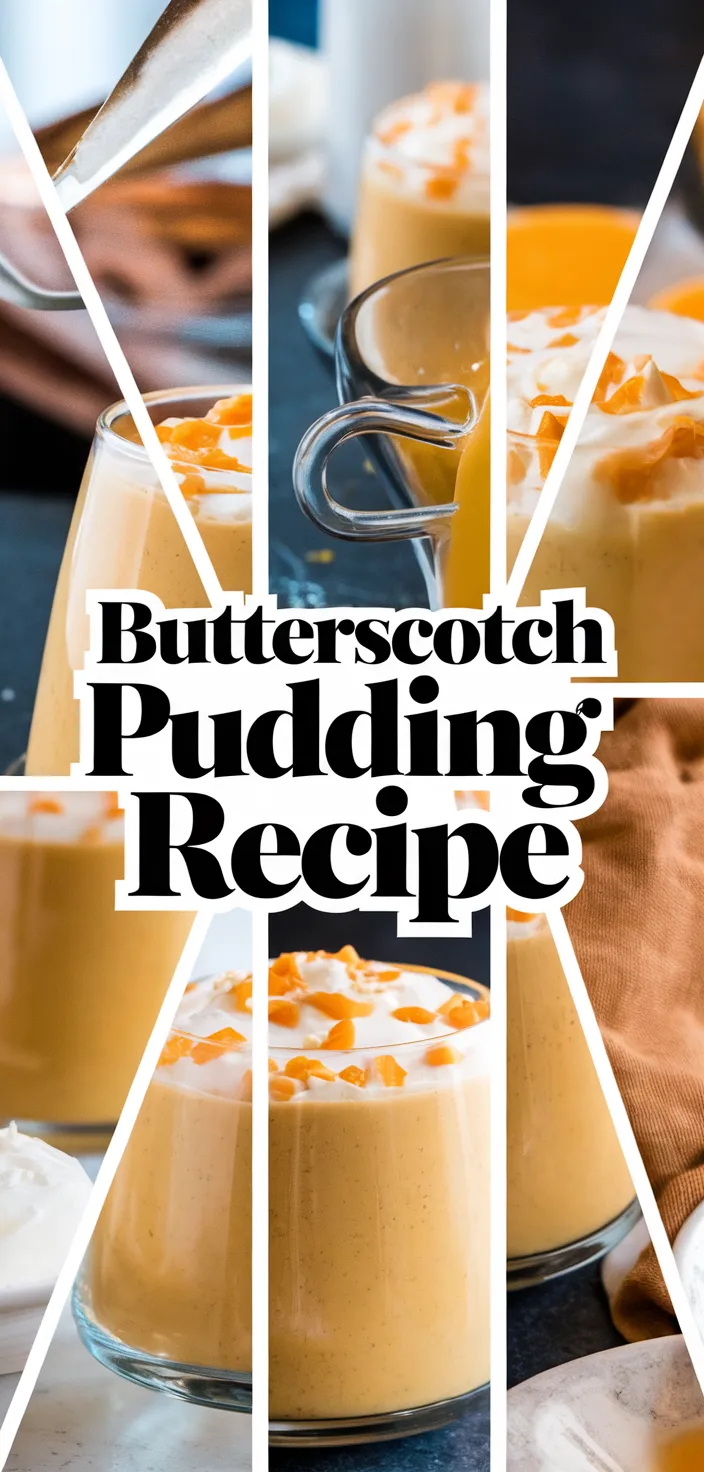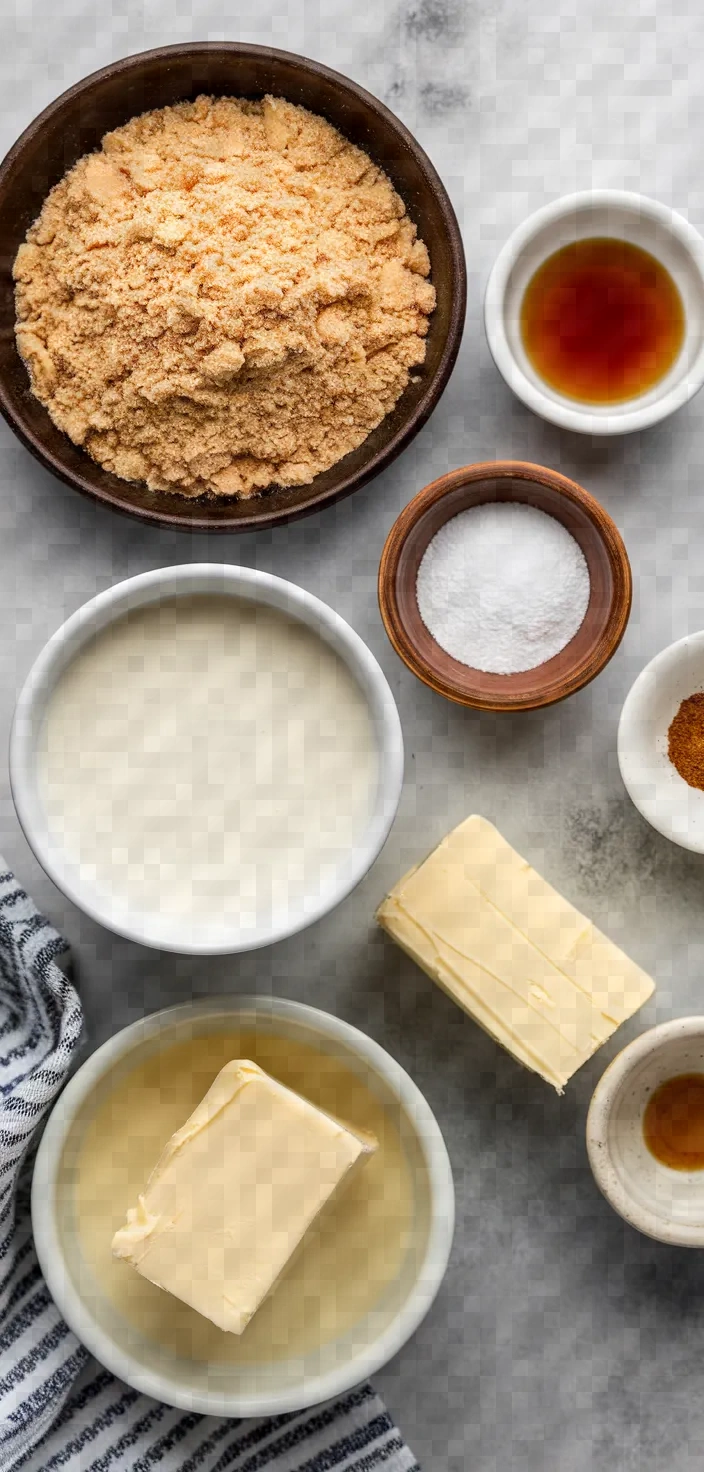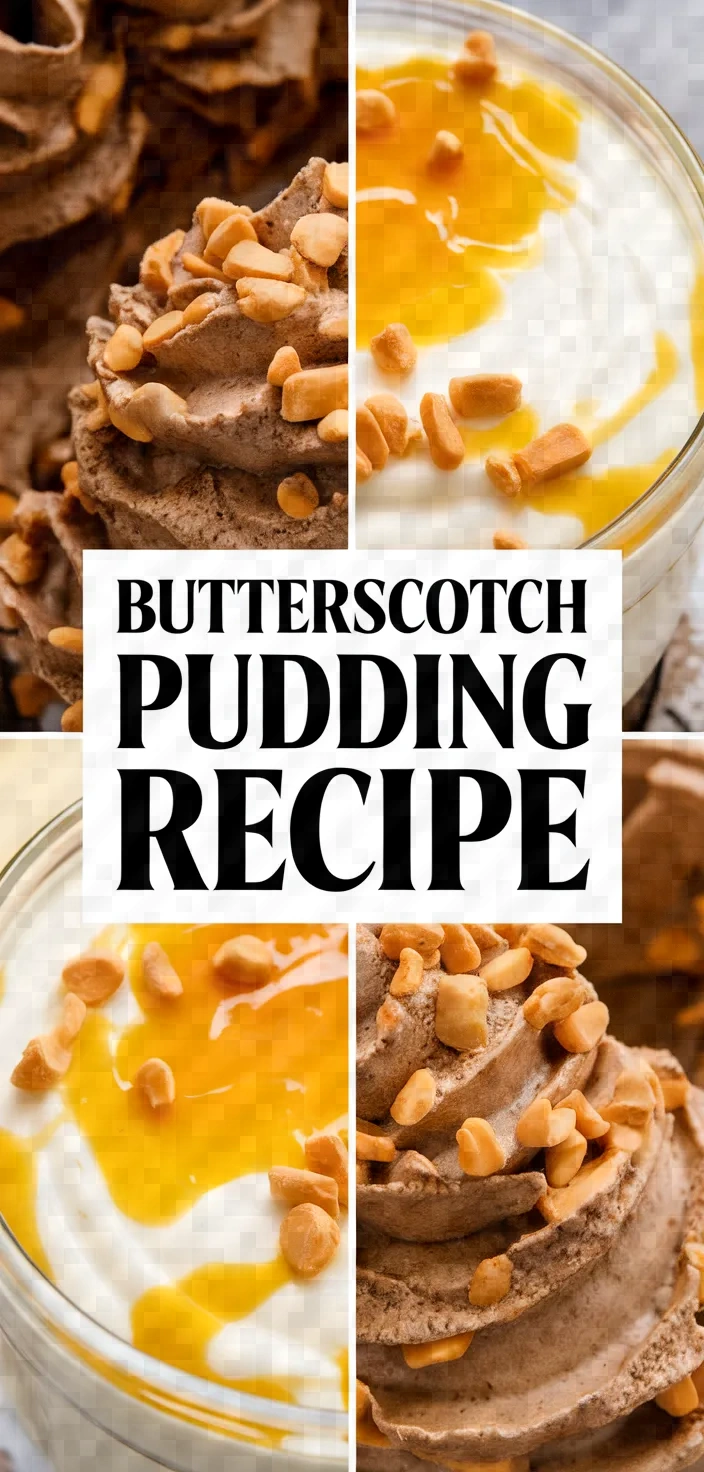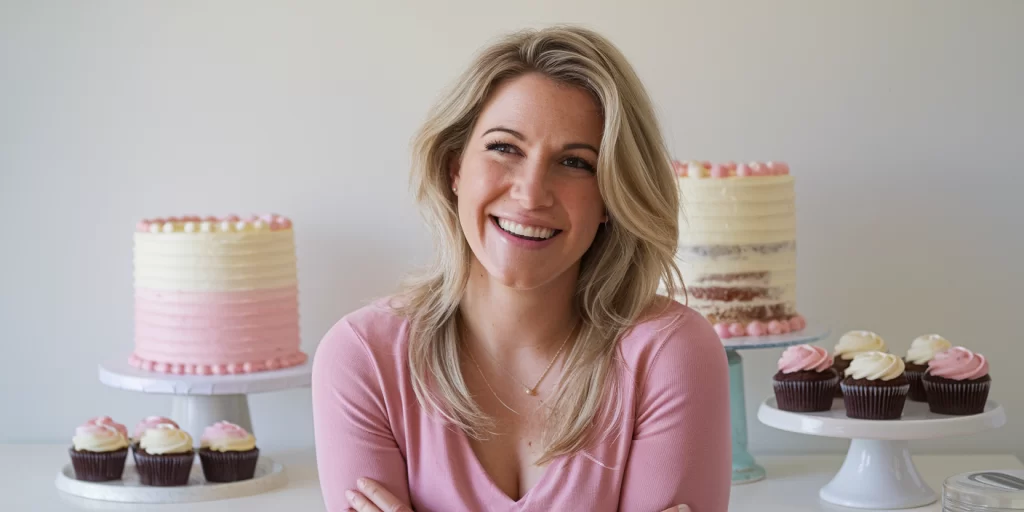I absolutely love this recipe because it transforms simple ingredients into a luscious, creamy pudding that’s a nostalgic reminder of childhood comfort, all while feeling sophisticated enough for a dinner party. Plus, the rich flavors from the brown sugar and butter combined with the silky texture make it an irresistible treat that never fails to impress my friends on Instagram!

I take great pleasure in preparing this butterscotch pudding. It brings together such rich flavors and, at the same time, such uncomplicated ingredients.
The pudding has a deep caramel sweetness, thanks to 1 cup of packed light brown sugar, which is my preferred form of sugar for making pretty much anything with the word “scotch” or “caramel” in it. Unsalted butter and heavy cream create a gloriously silky texture; I could happily eat this pudding every day without growing tired of it.
Ingredients

Brown Sugar:
Contributes luscious sweetness and intense caramel flavor.
Cornstarch:
Makes pudding creamy.
Whole Milk:
Base that is creamy, protein-rich, and provides calcium.
Unsalted Butter:
Contributes to richness and smooth texture.
Vanilla Extract:
Smelling is the most complex of the senses and the most potent.
There are upwards of 10,000 distinct smells that we can perceive, and they are combined in nearly infinite ways.
A person’s ability to sense odors is also closely tied to memory.
That can be good or bad.
Aromatic compounds are often used in perfumes, scented candles, or all sorts of ways to scent rooms or outdoor spaces.
Yet aromatic compounds can also bring to mind terrible memories, like the scents associated with death or decay.
But no matter how you look at it, oder is a means to elicit some pretty powerful feelings.
Heavy Cream:
Imparts additional richness and silkiness.
Ingredient Quantities
- 1 cup brown sugar, packed
- 1/4 cup cornstarch
- 1/4 teaspoon salt
- 3 cups whole milk
- 4 tablespoons unsalted butter
- 1 teaspoon vanilla extract
- 1/4 cup heavy cream
Instructions
1. In a medium saucepan, blend together the brown sugar, cornstarch, and salt. Whisk them together until well combined.
2. Slowly incorporate the whole milk into the mixture, whisking all the while. Make sure the final product is smooth and free of lumps.
3. Put the mixture in a saucepan and set it over medium heat. Stir the mixture frequently to keep it from sticking to the pan or burning, and let it come to a simmer.
4. When it starts thickening, lower the heat and keep cooking for about 2 to 3 more minutes. The mixture will thicken and you will need to stir constantly to prevent the pudding from sticking to the bottom of the pot.
5. Take the saucepan off the heat, then add the unsalted butter and the vanilla extract, combining everything together by stirring until the butter is melted and the mixture is uniform.
6. Let the mixture cool somewhat, and then stir in the heavy cream until the result is smooth.
7. Pudding should be placed into serving dishes or ramekins.
8. Wrap each dish tightly with plastic wrap, pressing it directly on the surface of the pudding so that a skin doesn’t form.
9. The pudding must be refrigerated for no less than 2 hours or until it is completely chilled and set.
10. You may optionally top with whipped cream or a sprinkle of extra brown sugar for garnish before serving.
Equipment Needed
1. Medium saucepan
2. Whisk
3. Measuring cups
4. Measuring spoons
5. Stirring spoon
6. Serving dishes or ramekins
7. Plastic wrap
FAQ
- Q: Can I use low-fat milk instead of whole milk?Yes, you can use low-fat milk; however, the pudding might not be quite as creamy and rich as it would be if you used whole milk.
- Q: Is there a substitute for cornstarch?A: Arrowroot powder or all-purpose flour can be used in equal amounts; however, the texture may vary slightly and is more likely to remain stable when arrowroot is used.
- Q: Can I make this pudding in advance?
A: Yes, you can make it a day ahead and store it in the refrigerator. It sets well and develops a deeper flavor. - Q: How can I ensure my pudding is smooth?To achieve the best consistency with your pudding, these are the must-do steps.
1. Cook the pudding, stirring constantly.
2. Strain the pudding if you’re worried about lumps, then chill. Puddings are generally lump-free but aren’t the smoothest desserts simply because they’re more set and less stirred than, say, a custard.
- Q: Can I use margarine instead of butter?A: For flavor and richness, butter is recommended, but if necessary, margarine can be used.
- Q: What can I use instead of heavy cream?A: Half-and-half can be used as a replacement for heavy cream, but it may not give the same velvety texture to your dish.
- Q: How long does the pudding need to chill?Chill the pudding for at least 2 hours before serving. After you scoop it onto a plate, you want it to keep its shape rather than collapse into a delicious, but messy, chocolate puddle.
Substitutions and Variations
Brown sugar. Substitute with coconut sugar or a mixture of granulated white sugar and a little molasses.
Cornstarch: Arrowroot powder or tapioca starch can be used as a thickener.
Whole milk: Replace with 2% milk or a non-dairy alternative, such as almond or oat milk. However, the texture may differ somewhat from that of whole milk.
Butter without salt: You may use salted butter, but decrease the amount of salt you add to the recipe. Or utilize a plant-based butter for a dairy-free alternative.
Pro Tips
1. Sift the Cornstarch and Brown Sugar Before mixing them with the other ingredients, sift the cornstarch and brown sugar to remove any lumps and ensure a smoother texture in your pudding.
2. Temper the Mixture Gradually When incorporating the milk, start by adding just a small amount and mixing it thoroughly before adding the rest. This helps prevent the formation of lumps and ensures a creamy consistency.
3. Use a Double Boiler for Even Heating To avoid burning the pudding, consider using a double boiler. This setup provides more controlled heat and reduces the risk of scorching at the bottom.
4. Chill with a Flavor Infusion For added depth of flavor, consider infusing the milk with a vanilla bean or a cinnamon stick before adding it to the mixture. Just be sure to strain out the solids before combining.
5. Adjust Thickness with Cooking Time If you prefer a thicker pudding, allow it to cook for an additional minute or two after it starts thickening. However, be cautious not to overcook, as this can affect the texture.

Butterscotch Pudding Recipe
My favorite Butterscotch Pudding Recipe
Equipment Needed:
1. Medium saucepan
2. Whisk
3. Measuring cups
4. Measuring spoons
5. Stirring spoon
6. Serving dishes or ramekins
7. Plastic wrap
Ingredients:
- 1 cup brown sugar, packed
- 1/4 cup cornstarch
- 1/4 teaspoon salt
- 3 cups whole milk
- 4 tablespoons unsalted butter
- 1 teaspoon vanilla extract
- 1/4 cup heavy cream
Instructions:
1. In a medium saucepan, blend together the brown sugar, cornstarch, and salt. Whisk them together until well combined.
2. Slowly incorporate the whole milk into the mixture, whisking all the while. Make sure the final product is smooth and free of lumps.
3. Put the mixture in a saucepan and set it over medium heat. Stir the mixture frequently to keep it from sticking to the pan or burning, and let it come to a simmer.
4. When it starts thickening, lower the heat and keep cooking for about 2 to 3 more minutes. The mixture will thicken and you will need to stir constantly to prevent the pudding from sticking to the bottom of the pot.
5. Take the saucepan off the heat, then add the unsalted butter and the vanilla extract, combining everything together by stirring until the butter is melted and the mixture is uniform.
6. Let the mixture cool somewhat, and then stir in the heavy cream until the result is smooth.
7. Pudding should be placed into serving dishes or ramekins.
8. Wrap each dish tightly with plastic wrap, pressing it directly on the surface of the pudding so that a skin doesn’t form.
9. The pudding must be refrigerated for no less than 2 hours or until it is completely chilled and set.
10. You may optionally top with whipped cream or a sprinkle of extra brown sugar for garnish before serving.










